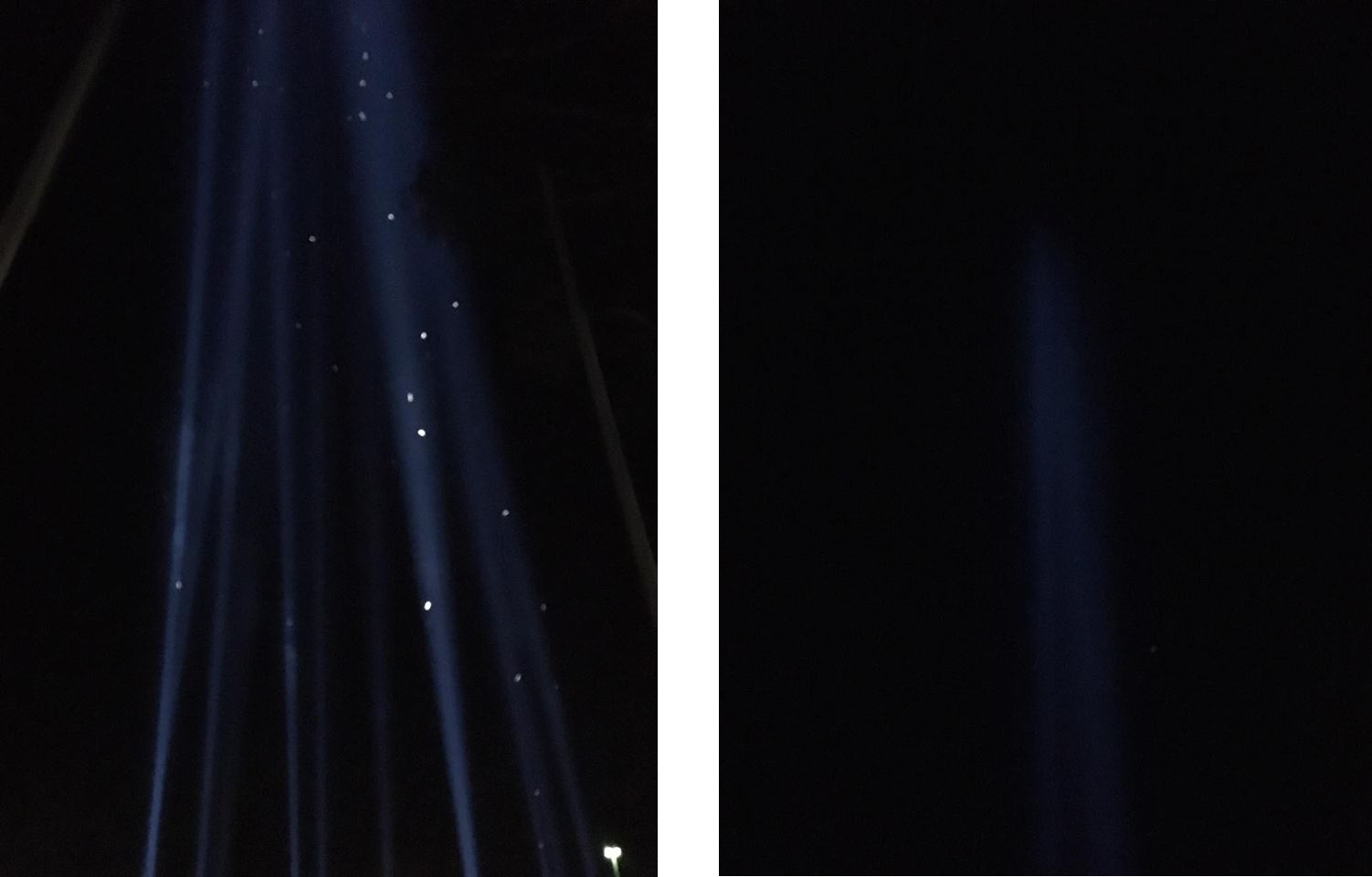When I'm in a dark environment, and I turn on a torch, I can see the beam of light from the torch. To the best of my understanding, the main reason why I can see the beam of light is that the light from the torch scatters off dust and other miscellaneous particles in random directions, allowing us to actually see the beam of light.
If this were the case, then I would expect the beam of light to decrease with intensity as it travels further from the torch, and the beam would sort of smoothly fade out of existence. However, recently at a lights festival held in Australia, I noticed something quite strange. Instead of smoothly fading out of existence, the beams of light at the festival continued into the night sky for a set distance, and were abruptly cut off.
(The image on the left is just a random image showing the beams of light. The bright white lights were (I think) moths and other insects.) As can be seen on the image on the right, the beams of light were abruptly cut off after a set distance, instead of fading out of existence smoothly. The effect didn't come out that great on the picture, but in real life it was incredibly pronounced.
Most times, I can always come up with some explanation for a phenomenon I observe, but this time round I legitimately have no idea. For a time I thought maybe it was due to human perception, (the way we perceive light), but I don't think that it can explain the effect, it was just that pronounced.




